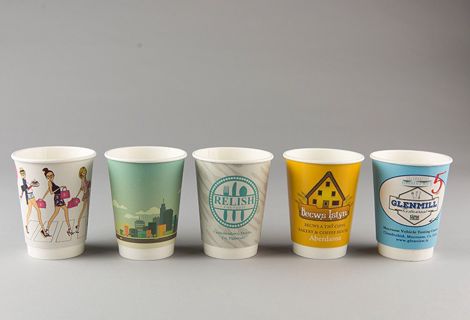
Decorating drinkware has become a creative outlet and branding tool for both individuals and businesses. From handmade styles to advanced digital prints, the trends in cup design are evolving fast. Let’s explore the most exciting movements shaping this growing niche.
Personalization Through Digital Printing
Digital printing has made it easy for people to bring any design to life. This method uses modern printers that apply high-resolution images directly to cups. Businesses love it because it helps them add logos, taglines, or messages quickly. With no setup for each print, it’s great for small batches too.
One key reason for the rise in digital printing is speed. People no longer have to wait weeks for delivery. A digital print can be done in just a few days. It also supports full-color designs, which opens the door for more creativity. You can now see artwork, selfies, or brand icons with sharp detail and bright colors.
Another advantage is that this method is eco-friendly. Since it doesn’t require screens or plates, there’s less waste. Many new print shops use water-based inks that are safer for the environment. Also, the quality is long-lasting. Unlike stickers or wraps, the design won’t peel or fade easily.
For businesses, this trend means more than just decoration. It’s a smart way to build brand loyalty. Imagine a coffee shop offering customized cups with customer names or special promotions. This small gesture can leave a big impression. And for online sellers, the ability to offer unique prints means more repeat buyers.
Eco-Friendly and Sustainable Materials
The world is moving towards greener choices, and cups are no exception. Consumers today are more mindful of what they buy. They want products that do less harm to the planet. As a result, many designers are now using sustainable materials for cup decoration.
Bamboo, cork, and recycled paper are among the top materials gaining attention. These items don’t just reduce waste; they also look great. Their natural textures add warmth to the design. In many cafes, you’ll now see wooden or bamboo cups with hand-burned logos. These stand out in a world full of plastic.
Reusable cups are also becoming more stylish. Instead of boring plain designs, many now come decorated with soft earthy tones and minimalist art. Some makers even use natural dyes, which are non-toxic and fade in a gentle, vintage way over time. That aged look has become popular, especially with younger buyers.
Sustainability is also influencing packaging. Cup decorators are skipping the plastic wrap and using recycled kraft boxes. Some even tie them with jute or hemp strings for a rustic touch. This appeals to gift buyers who want the item to look thoughtful and eco-aware from the moment it’s opened.
3D Embellishments and Textures
Flat designs are taking a back seat to textured, touchable surfaces. This trend is all about adding layers and depth to cup decoration. It turns an everyday item into a work of art. From raised text to embossed shapes, decorators are pushing the limits of what a cup can be.
Embossing is one technique gaining ground. It involves pressing a design into the surface to give it a raised feel. You often see this in logos or initials. It gives a sleek, premium touch that simple prints can’t match. This is popular for wedding favors or high-end business gifts.
Then there’s silicone and resin add-ons. These materials allow for small sculpted items to be added to cups. Think tiny flowers, cartoon faces, or even glitter shapes. Resin also adds a glossy finish that protects the art underneath. These cups often go viral on social media for their creative looks.
Textures are not just visual. They improve the grip of the cup too. Many users say they feel safer holding something with a pattern. Cup makers use soft rubber prints or sand-like surfaces for this reason. They blend form and function well.
Glow-in-the-Dark and UV Reactive Designs
Lighting effects are creating a new level of fun in cup design. Glow-in-the-dark and UV-reactive features are making waves. These cups change color or shine when exposed to light, making them perfect for events or late-night use.
Glow designs usually involve a layer of luminous paint. This paint stores light and then glows in the dark. It’s safe to use and comes in many colors. You might see stars, names, or fun patterns lighting up the cup. They add magic to nighttime settings like camping or parties.
UV-reactive cups respond to sunlight or black light. This makes them great for festivals or beach cafes. When UV light hits the cup, hidden designs appear. Some brands use this for marketing, revealing logos only under sunlight. It’s a smart way to grab attention and spark curiosity.
People love these effects because they feel interactive. Children enjoy cups that glow at bedtime. Adults enjoy them for night events or social media posts. They stand out in photos, helping users share eye-catching content online.
Minimalist and Monochrome Aesthetics
In today’s fast-moving world, less is more. That’s the core idea behind the minimalist trend in cup decoration. It focuses on clean lines, soft colors, and simple forms. This style appeals to people who enjoy elegance without too much flair.
Most minimalist designs use one or two colors. White, black, beige, and gray are popular choices. These give the cup a modern, classy feel. Instead of large prints, designers use small icons or thin lines. This helps the cup blend into any setting, from a home office to a coffee shop.
Typography is key in this trend. Many cups now feature neat, small words placed in one corner. These can be daily reminders, names, or uplifting quotes. The text is often in lowercase, adding a relaxed tone. Fonts are simple and easy to read.
The finish also matters. Matte surfaces are more common than glossy ones in this style. They feel soft and look modern. Some cups even come in stone or cement textures to match minimalist interiors.
Cultural and Traditional Art Influences
Culture is making a strong mark in cup decorating. More artists are using traditional styles to tell a story. This includes native patterns, folk art, and heritage prints. Each design carries meaning, making the cup more than just a tool — it becomes a cultural expression.
For example, you’ll find African tribal patterns, Japanese cherry blossom themes, or Middle Eastern mosaic tiles printed on cups. These designs don’t just look pretty; they share history and emotion. They connect users with far-off places or even their own roots.
Many creators work with local artists to ensure the designs stay true. They focus on details like brush strokes, colors, and symbols. Some use real hand-painting techniques, while others print scanned versions of original works.
This trend is especially strong in handmade marketplaces. Buyers want items that feel authentic and support artists. They enjoy learning about the story behind a design. Some cups even include a card explaining the origin and meaning of the pattern.
Interactive Design Features
Today’s users want more than just looks — they want to engage with their products. That’s why interactive features are becoming a major trend in decorating cups. These designs ask for user action or change with touch, heat, or use.
Heat-sensitive cups are a great example. They change color when filled with a hot drink. A black cup may slowly reveal a picture or message as the coffee warms it. This creates a wow moment every time someone uses it.
Some designs include writable surfaces. You can use chalk or special markers to add notes. This is fun for families, offices, or cafes. People can write names, moods, or short messages. Then just wipe and write again. It brings freshness to each use.
Other cups include moving parts like spin lids with changing icons or smiley faces. Some even link to apps or include QR codes for surprise videos. It’s like blending digital and physical art in one item.
Statement and Bold Graphics
In contrast to minimalism, some people want their cups to stand out loudly. That’s where bold graphics come in. These include large icons, bright colors, and eye-catching slogans. They speak directly and make an instant impact.
These cups often feature pop art, comic styles, or social messages. The goal is to turn the cup into a talking point. Many use neon tones, sharp contrasts, and layered effects to grab attention. They’re popular at music festivals, street cafés, and online shops.
Brands also love bold graphics for promotion. A loud, clear logo or clever slogan sticks in the memory. Paired with fun visuals, it turns into free advertising every time someone uses the cup.
This design style often targets younger users. It fits with trends in fashion and tech branding. It’s playful, expressive, and not afraid to take risks.
For creators, it offers freedom to experiment. You don’t have to follow rules. Just mix shapes, words, and color to tell a story or mood.
Conclusion
Decorating drinkware has grown into an art form that reflects lifestyle, culture, and trends. Whether it’s through eco-conscious choices, tech-based prints, or expressive styles, each trend tells a unique story. This evolution has reshaped how people view customized cups — not just as containers, but as creative canvases that fit modern life.
Anita Terryさんをフォローして最新の投稿をチェックしよう!
0 件のコメント
この投稿にコメントしよう!
この投稿にはまだコメントがありません。
ぜひあなたの声を聞かせてください。
